Gravel Race Prep Series: Nutrition and Hydration
- Written by Keith Huster
- /
- 13 min read
- /
- Last updated 9 months ago
Nothing can wreck your ride like bonking mid-race. You can, however, manage the risk of bonking by fueling your body properly throughout the course of the ride. In this post, I will cover what I have learned about proper fueling for a long-distance gravel race.
⦿ Part 1: Physical Endurance
⦿ Part 2: Mental Fortitude
⦿ Part 3: Bike Setup and Tire Choice
⦿ Part 4: Nutrition and Hydration (this post)
⦿ Part 5: Rider Kit / Clothing Choice
⦿ Part 6: Final Preparations
Nutrition and hydration fundamentals
The dreaded "bonk"... all cyclists try to avoid it but sometimes it seems inevitable. However, bonking doesn't have to happen if you fuel your body correctly. Bonking occurs because you, unintentionally, starved your body to the point that it has no other choice but to start shutting down in order to conserve energy. This is easy to do when you are focused on the ride and forget to fuel along the way.
So, let's get one thing straight... you must fuel your body BEFORE you feel a bonk coming on. If you start to feel a bonk coming on then you are probably past the point of recovery. What I mean by this is that even if you start fueling your body it will most likely not have time to break down and absorb the calories from the food you ingest. Your only choice at this point is to slow down your pace and continue to try to refuel your body. Slowing down will take some of the load off your muscles thus also slowing the bonk. But, nobody wants to be forced to slow down. 👎
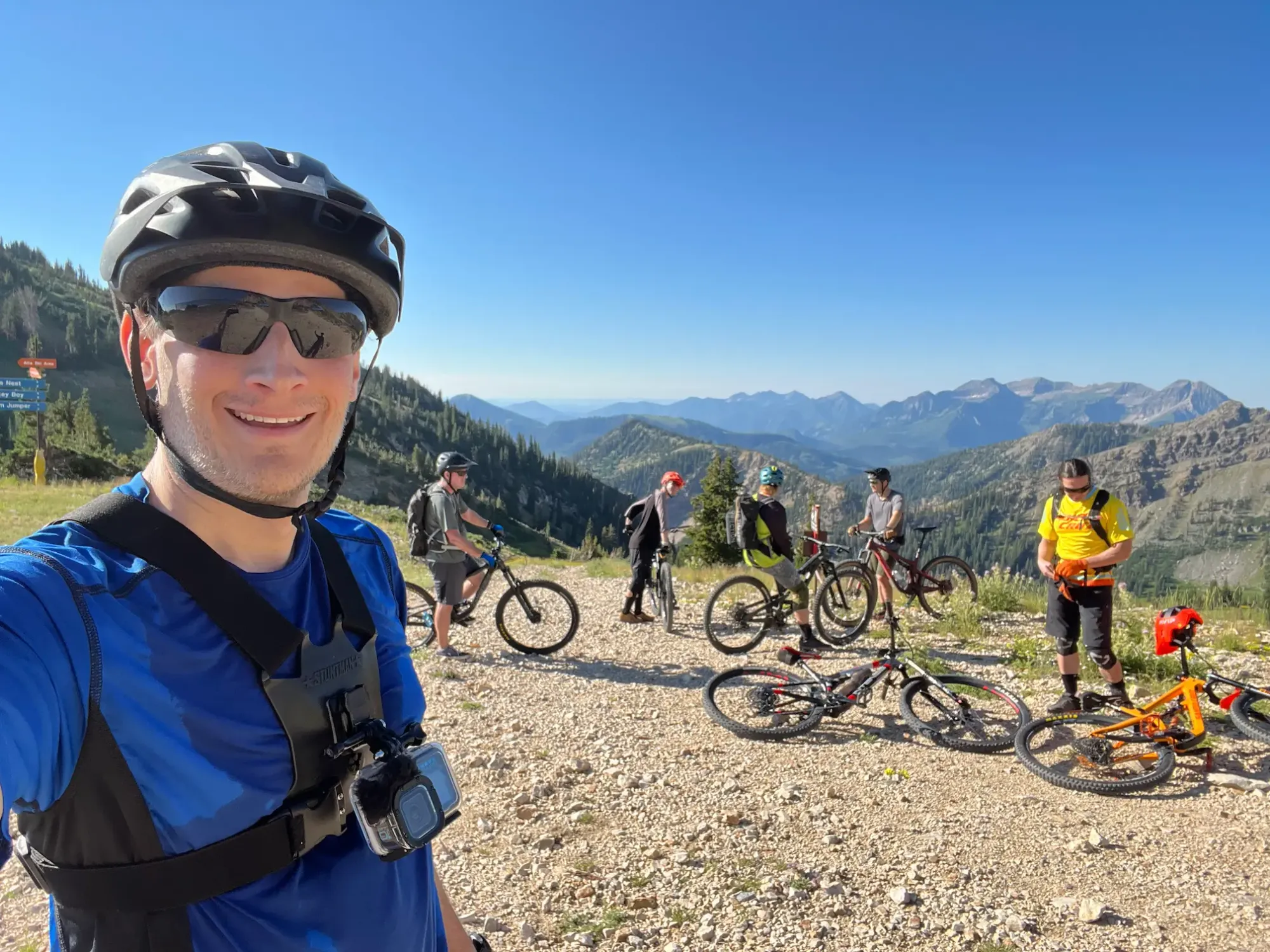
The key takeaway here is that you need to consistently fuel your body throughout the race. This means that you will need to eat early and often, probably more than you think you need to.
Benefits of consistent fueling
- Fewer energy spikes: Energy spikes may sound good at first but they can actually be a problem. For example, eating too much sugar at one time leads to an elevated heart rate and jitteriness. You are already pushing your body hard enough during the race so don't add to the load by consuming too many calories at once.
- Fewer energy lulls: Eating too much food or not enough food can lead to you feeling lethargic and lacking energy. This feeling can also be a result of a sugar crash from eating too many high-sugar "energy" bars or gels.
- Easier on your gut: Eating too much food at one time can result in an upset stomach. Not eating enough food, and then trying to "catch up" on the missed calories, can result in a lack of hunger making it difficult to eat. This sounds counterintuitive but it happens more often than you think.
- Less risk of bonking: Consistency is key when it comes to fueling your body. Keeping a steady stream of calories available throughout the day will help to minimize the risk of bonking mid-race.
Set reminders to eat and drink 🍫🥤
During the Salty Lizard 100 gravel race, I used the custom alerts feature of my Wahoo Elemnt Roam bike computer to signal when I needed to eat or drink. This took my perceived hunger and thirst out of the equation and ensured that I ate/drank on a regular cadence. If you don't have a bike computer like this then you may have to get creative. You could also use alarms on a smartwatch, reminders on your phone, or go low-tech and tape hand-written reminders to your top tube. Do whatever works for you and your available equipment.
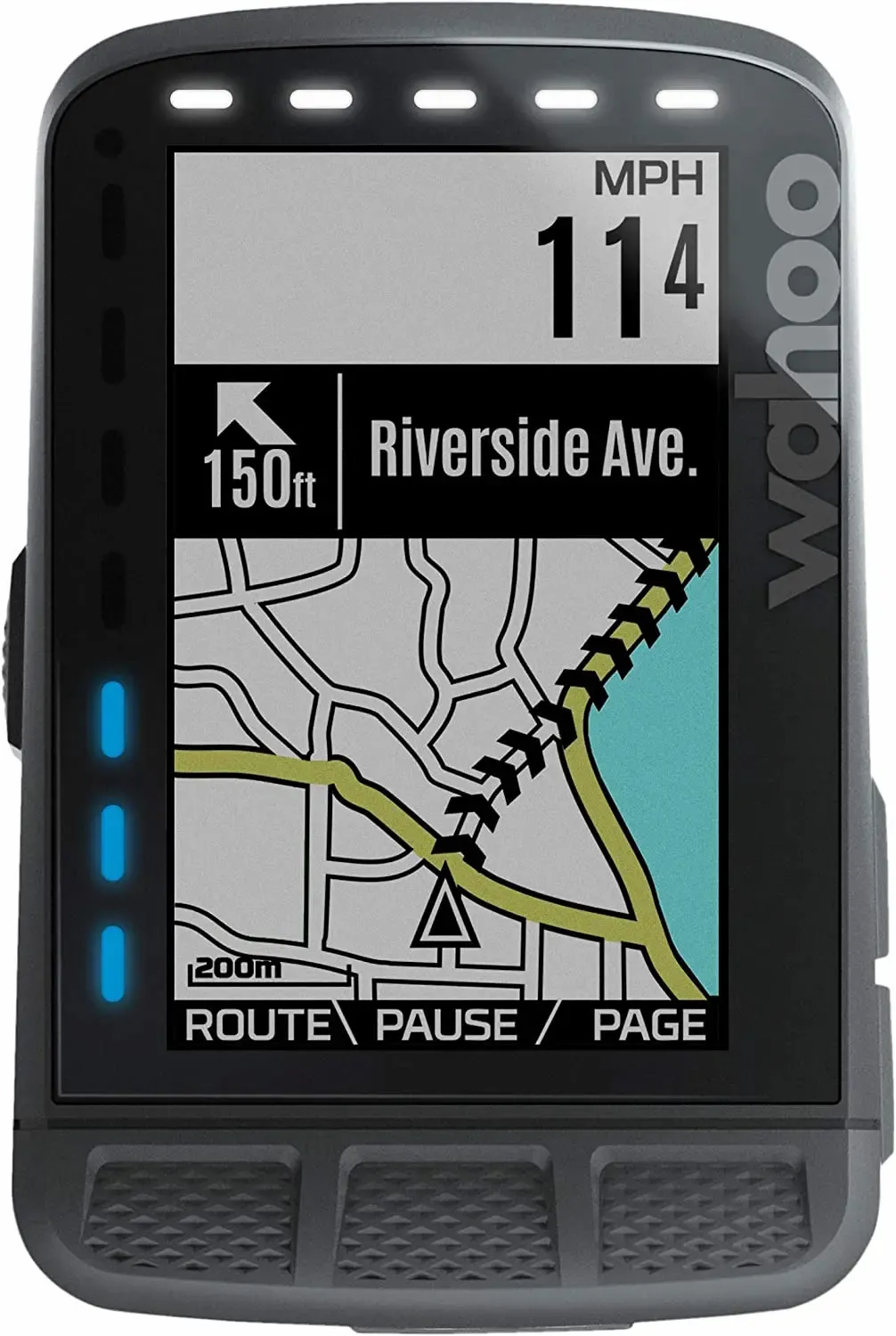
Wahoo Elemnt Roam (v1)
The original Wahoo ELEMNT ROAM GPS bike computer is built for the ride. Its smart navigation features allow for on-device navigation including “Back on Track” re-routing which will get you to your destination even if you veer off course. The color screen, combined with the crystal-clear 2.7" Gorilla Glass© display, it makes seeing your routes and data easier, so you can go back to focusing on your ride.
The fueling-related alerts that I created for the Salty Lizard 100 gravel race are shown below (as an example):
- EAT!!! 🍫: This reminder was triggered every 30 minutes during the race. 30 minutes may sound too short between meals but I based this reminder on some popular articles I found during my pre-race research.
- DRINK!!! 🥤: This reminder was triggered every 20 minutes during the race. I have a bad habit of not drinking enough fluids while riding so this was probably my most helpful reminder. I knew that I wanted to consume at least one bottle every 15 miles or so and this helped me to stay on track.
Nutrition strategy
A proper nutrition strategy is a must when it comes to gravel racing. As I have already covered in this post, you must eat consistently throughout the race in order to avoid bonking. Having a plan of what you will eat, and when you will eat, for the entire race will pay dividends in the end. I broke my nutrition strategy into two key areas; solid foods and supplemental calorie sources.
Core calories from solid foods
I don't know about you, but in my daily life, I don't consume the majority of my calories from energy gels, energy chews, or liquid calorie sources. I also don't only eat sweet foods throughout the day. I generally have a mix of sweet and salty (among other) types of food. Because of this, I found it best to focus on eating solid foods as my main method of caloric intake. I was concerned, based on my research in this area, that eating too many sweet gels or chews could lead to an eventual sugar crash and/or gut-related issues later in the race.
Sweet energy bars
During all of my training rides, I generally ate a mix of Clif Bars and Nature's Bakery Fig Bars. These two bar types provide a nice mix of dense calories and enough sugar to keep my energy levels up. The only problem with these bar choices is that I wouldn't be able to easily carry enough bars to make it through an 8+ hour race. Clif Bars are typically around 200-300 calories per bar and the Nature's Bakery Fig Bars are around 200 calories per bar. I had estimated that I would need roughly 300 - 400 calories per hour which meant that I would need to carry upwards of 16 bars! It just wouldn't be possible or comfortable for me to stuff enough of these bars into my bike bags and jersey pockets. So, I had to look for an alternative solid fuel source.
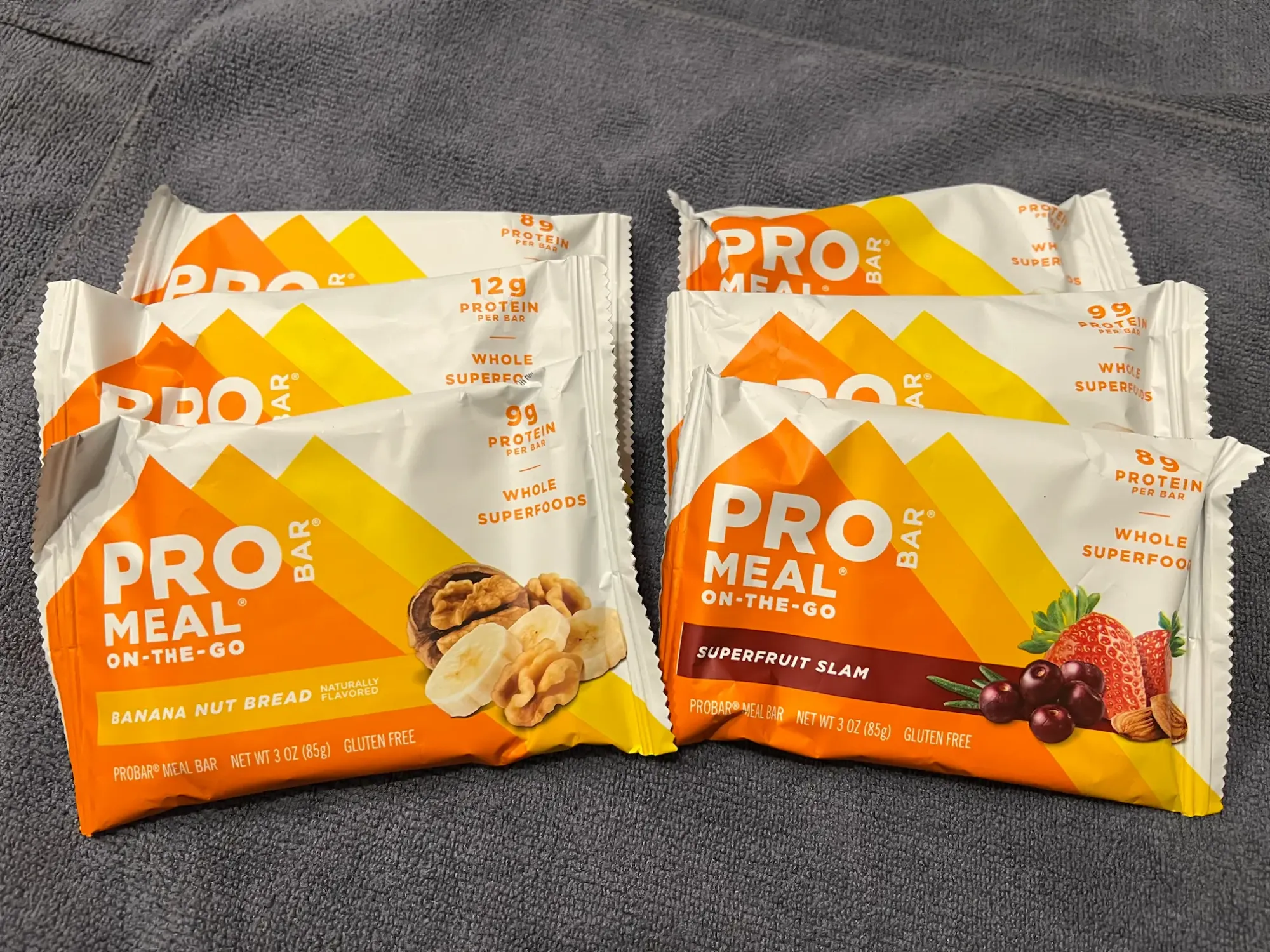
PROBAR Meal Bars
- GLUTEN-FREE: Safe, sustainably-sourced ingredients provide the benefits of a gluten-free diet
- Energy from PLANT-BASED protein and fiber from CHIA and FLAX SEEDS keep you moving whether at work or adventuring
- 360 to 390 CALORIES: A clever mix of NATURAL ingredients work to provide healthy energy and a quick, filling meal on-the-go
- REAL INGREDIENTS: Made With Natural Oats, Nuts, and Seeds so you can feel good knowing you are feeding your body with safe nutrients
- NON-GMO PROJECT VERIFIED: All PROBAR products are Non-GMO Project Verified
That's when I discovered PROBAR Meal Bars! These bars are amazing. They are high-calorie (nearly 400 calories per bar), easy to chew, easy to digest, and taste delicious. 😋 The bars are not much larger than a Clif bar and thanks to the calorie density I would only need to carry up to 8 bars, not 16. Another benefit of these bars is that they are incredibly easy to portion into 100-calorie chunks by cutting them into fourths. For me, these chunks were the perfect size to stuff into my top-tube bag and eat while on the move. I would simply pop a single 100-calorie chunk into my mouth every time my "EAT!!! 🍫" alert went off.
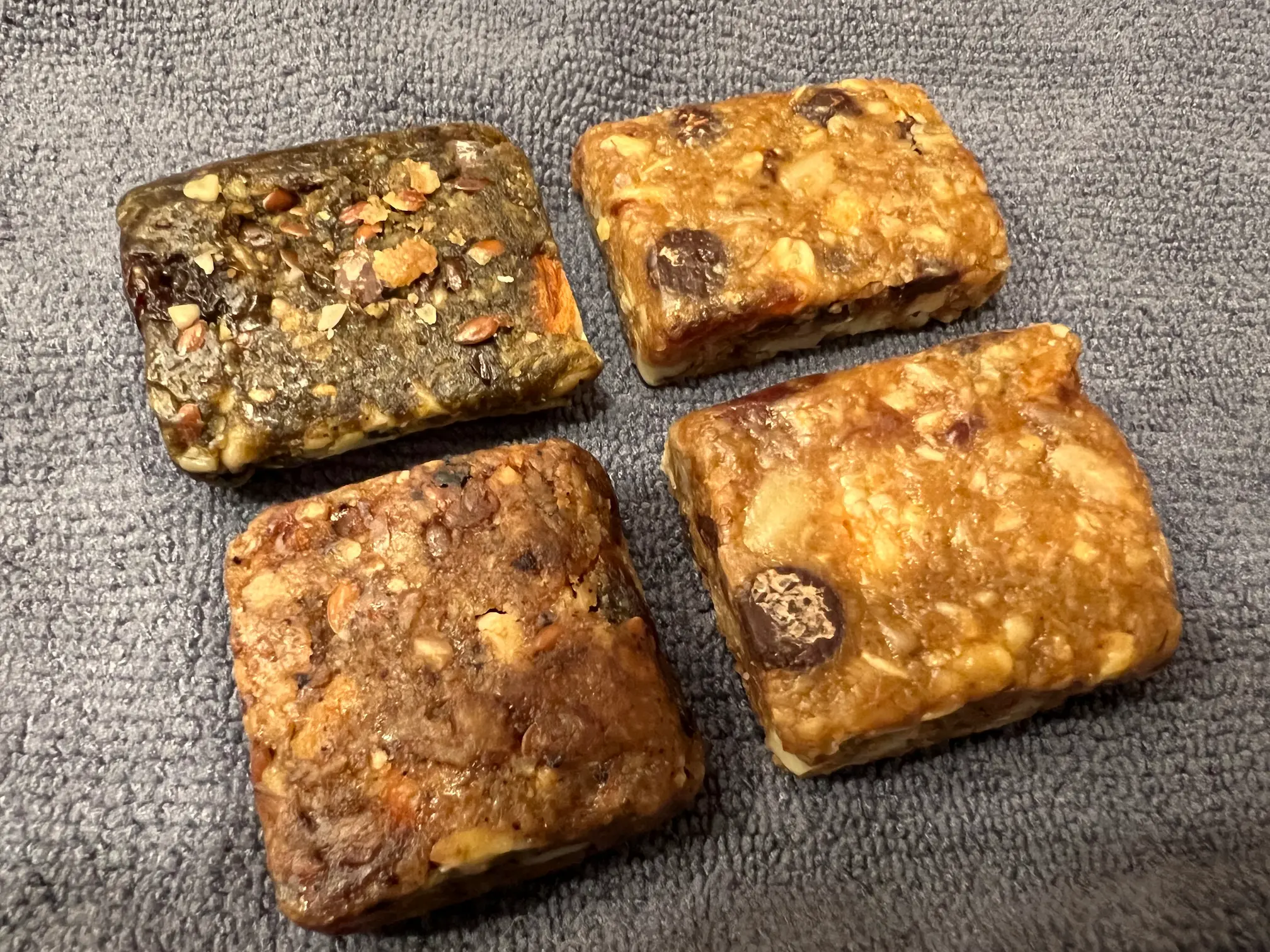
Salty palate cleanser
Eating sweet snacks all day may sound like fun but trust me it isn't. Even the most sweet-toothed riders will eventually get tired of eating overly sugary energy bars. I knew this would be a problem for me because I try to limit the amount of sugar that I eat in my typical daily diet. So, for this reason, I also carried portioned beef jerky sticks in my top-tube bag.
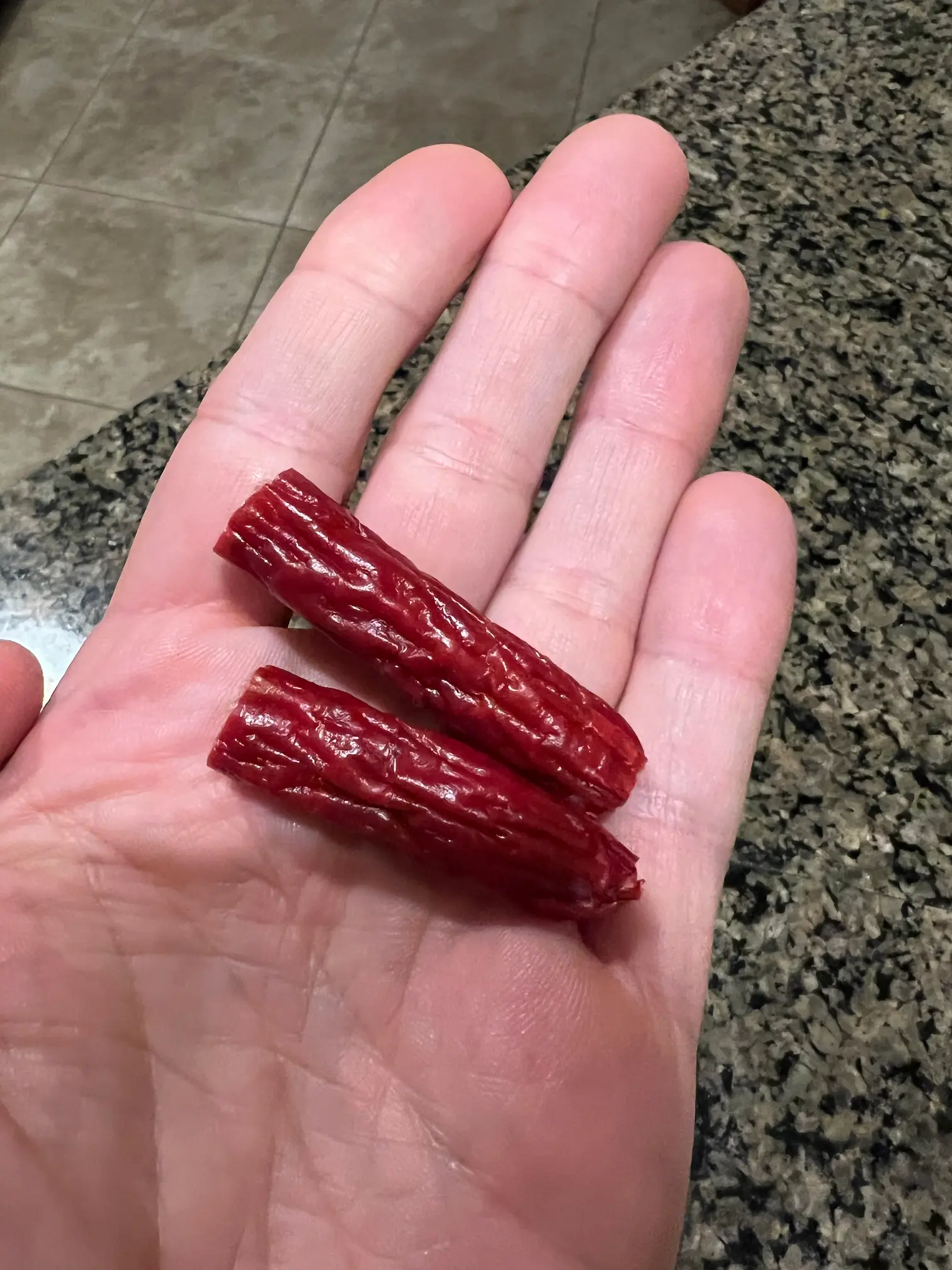
Specifically, I selected Tillamook Country Smoker - Zero Sugar Smoked Sausages. The "zero-sugar" in the name is important since most beef jerky actually contains quite a bit of sugar. I also selected these specific snack sticks as I knew they would have a mild, salty taste. Some spicy jerky sticks, while tasting delicious, could potentially upset my stomach so I avoided those.
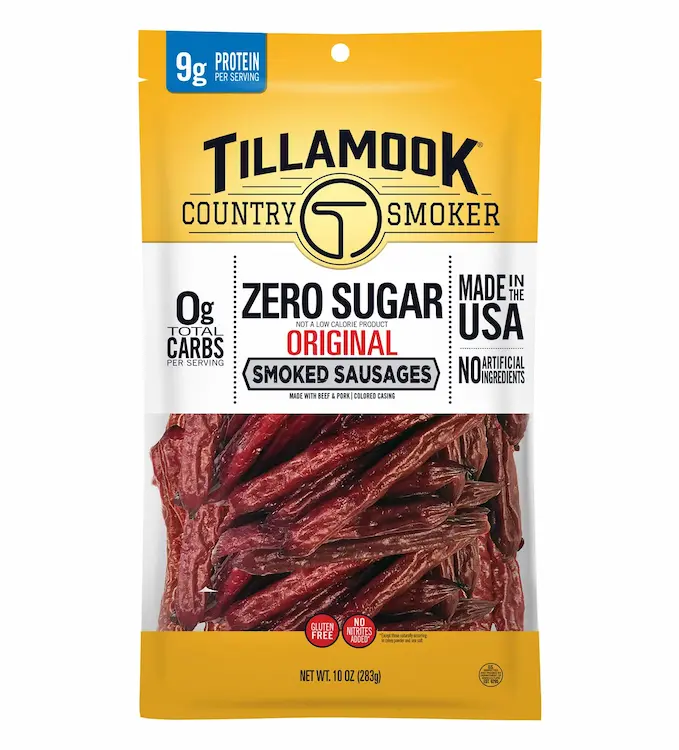
Tillamook Country Smoker - Zero Sugar Smoked Sausages
All-natural and keto-friendly, our Zero Sugar Beef Jerky & Smoked Sausages deliver a big taste without sugar or carbs. With no artificial ingredients or sweeteners, they’re perfect for snackers looking to load up on protein and cut back on sugar without compromising on flavor.
During the race, I would generally eat one jerky portion for every two energy bar portions. So, I would eat a single energy bar chunk at the 30-minute mark followed by another energy bar chunk plus a jerky portion at the 60-minute mark. This process was repeated every hour throughout the race. The sweet-to-salty switch-up kept my taste buds and gut happy throughout the 8+ hour race.
Supplemental calorie sources
There is a time and a place for energy gels and energy chews, and that time and place is race day! During my training rides, I often see casual riders consuming energy gels like they are competing for the podium in a top-tier race. To me, it just doesn't make sense to eat these types of calorie sources on a regular basis. Energy gels and chews are designed to give you a temporary boost of energy. They are not designed to be a primary energy source for your body.
During the Salty Lizard 100 gravel race, I carried two types of supplemental calorie sources; Clif Bloks and Gu Energy Gels. I had only used these energy sources a few times prior to the race so I was a little leary that they might upset my stomach if I ate too much of them. My strategy was to save these chews and gels until at least the 65-mile mark. At this point, I knew that the race course would become more difficult and I would be tiring so the extra energy would be beneficial.
I really enjoyed eating the Clif Bloks energy chews, specifically the Salted Watermelon flavor. 🍉😋 These chews are denser than a typical gummy bear and didn't get stuck in my teeth as I chewed them. The added density allows you to slowly eat the energy chew, if you prefer, and enjoy the burst of flavor. Each chew provides around 30 calories and some much-needed salt and sugar. So, they make for a very easy-to-eat snack when you are deep into a race. These will be on my short list of ride snacks in the future.
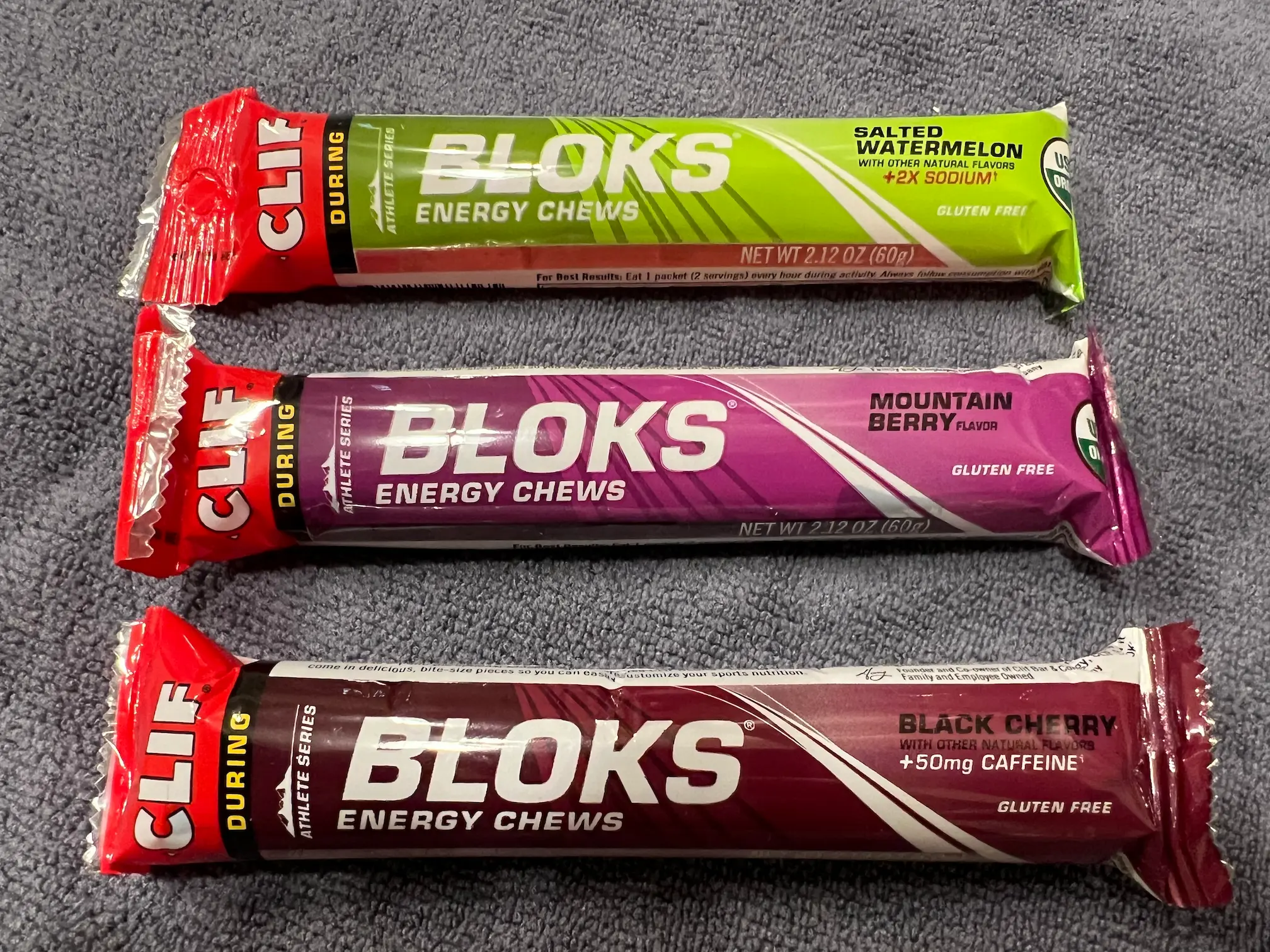
As for the Gu Energy Gels, I brought a mix of decadent (e.g. Espresso Love) and fruity (e.g. Tri-Berry) flavors so that I wouldn't get tired of eating the gels. By the end of the race, I had not eaten any of the Gu Energy Gels that I had packed but I probably should have. I had originally planned to eat at least one of these gels prior to the steep climb near mile 90 then another near the end of the race to give me a final boost toward the finish line. However, I found that I had managed my nutrition well enough throughout the race that I didn't need to fall back on these. Next time that I race, I will be sure to take advantage of these little packets of energy.
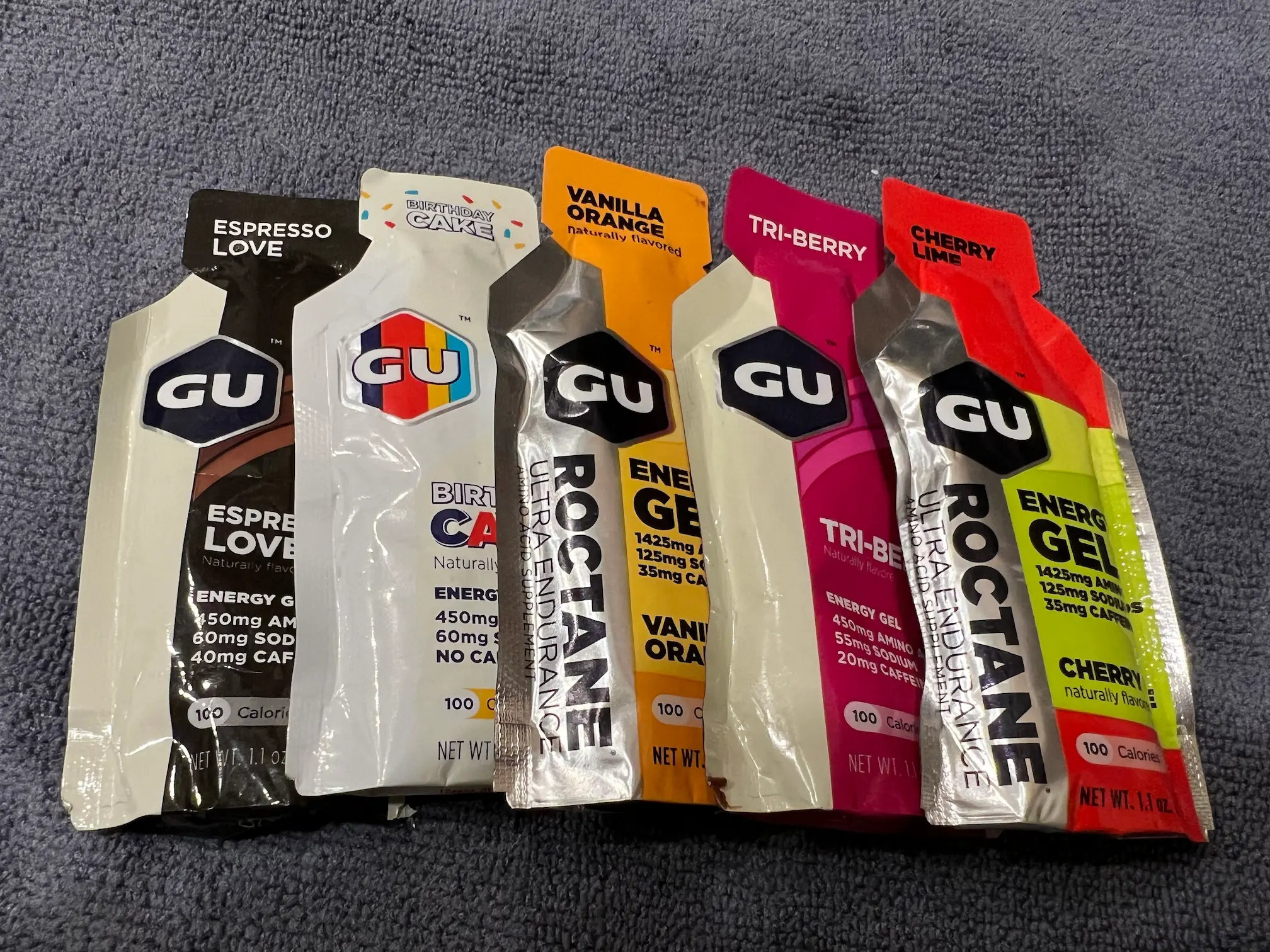
Hydration strategy
If nutrition is important during a race then you should consider hydration as a critical aspect of your race strategy. A lack of hydration will almost immediately have a detrimental impact on your race outcome. Unfortunately, staying hydrated is no easy task during a race. The rough trails, high speeds, and racer antics can make you easily lose track of when you last took a drink. If you do become dehydrated, it is almost impossible to bounce back and your race may effectively be over.
Dehydration creates all sorts of issues for your body. You can end up with muscle cramps, decreased power output, slowed cognitive processes, etc. You may also end up with an inability to break down food properly thus leading to a lack of appetite. Yep, you read that right, failing to drink enough fluids can spiral into a failure to eat enough food. 😱 With all that said, it is incredibly important that you drink consistently and frequently throughout a race.
Electrolyte drinks and hydration mixes
I assume you are familiar with electrolyte drinks such as Gatorade and Powerade. These types of drinks are designed to hydrate your body with water while also providing the key nutrients (think salts and sugars) that you are burning during a race. Unfortunately, some of these types of drinks contain way too much sugar which can lead to gut and sugar-crash issues if consumed too much. There are low or zero-sugar options such as Gatordae G2 but I have found that these drinks are not nearly as effective as the more modern, endurance-athlete-focused drink mixes.
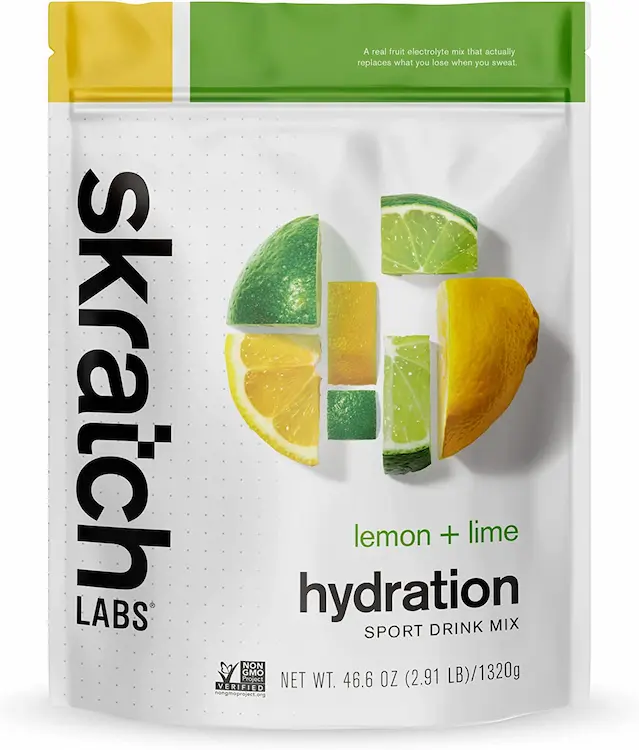
Skratch Labs Hydration Mix
DEVELOPED FOR ATHLETES: An electrolyte profile to match what's lost in sweat, rehydrate, and an optimized ratio of sodium & glucose for fast absorption and energy. Cycling, running, endurance, or workout - perform better AND feel better.
My electrolyte drink of choice is the hydration mixes from Skratch Labs. Specifically, I really enjoy the Lemon Lime, Orange, and Pineapple flavors. I have found that these mixes provide the best bang for the buck after several years of trial and error with various brands. During my pre-race training sessions, I found that I was cramping and bonking much less frequently after I started hydrating with Skratch. I also found that I was able to hold higher power outputs for longer training periods. My best guess as to why is that their scientific research into racers' hydration needs closely aligns with how my body actually works. 🤓
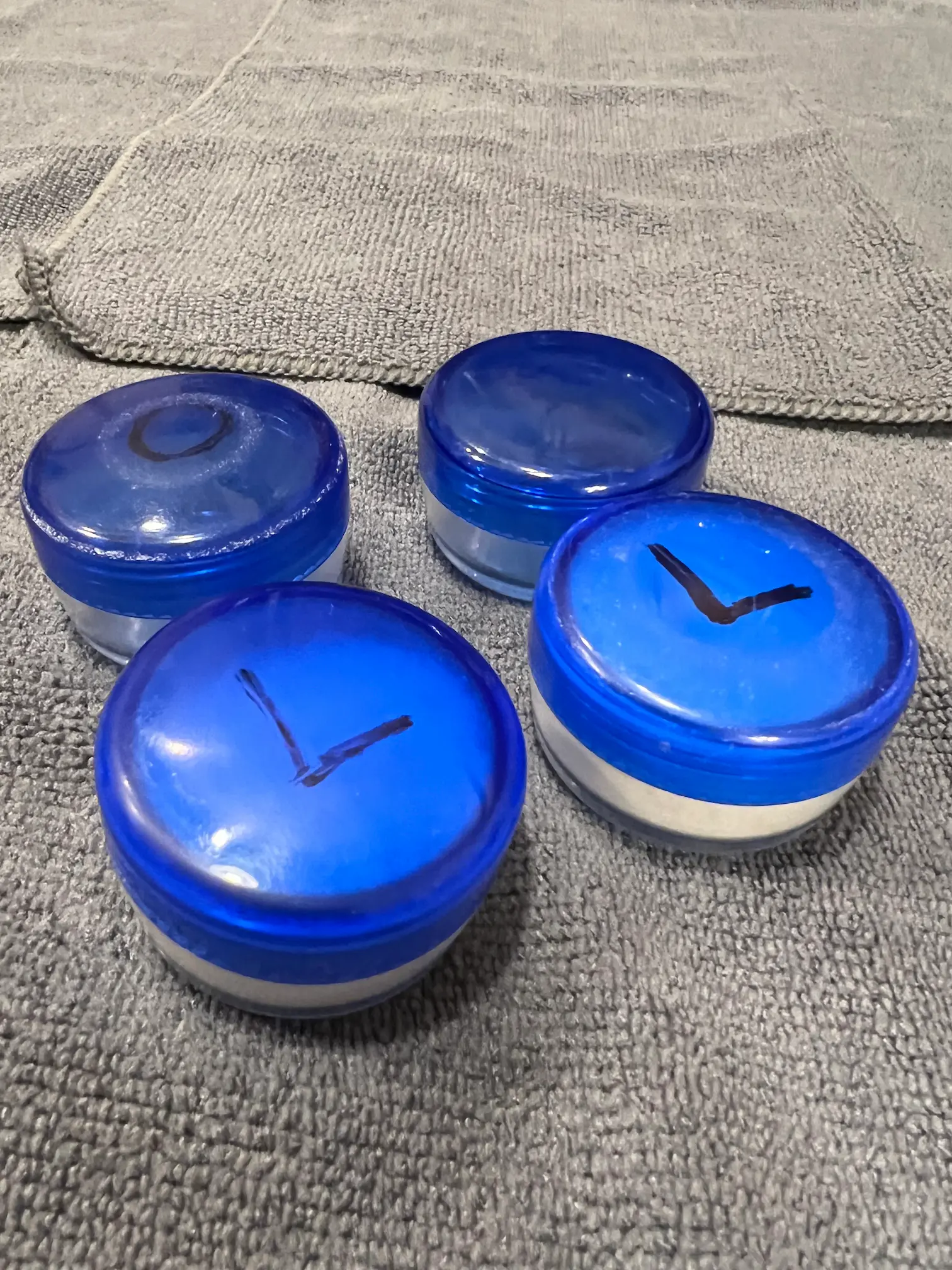
I have been wanting to test out the Super-High Carb version of the Skratch hydration mix as well. I have heard great things about this mix as it provides up to 400 nutrient-rich calories per serving!!! However, I have been reluctant to purchase any due to the high cost of this mix. However, Skratch has recently released 200-calorie individual packets of this mix so maybe I will test it out this summer. I would love to hear if anyone has any experience with this race-oriented hydration mix. Please let me know if the comments section below.
Water (yep, plain old water) 💦
Ok, I have talked all about electrolyte drinks and the benefits that they provide during a race. So, why would I also recommend drinking plain old water? Well, I am glad that you asked. 😀 Electrolyte drinks, like food, require adequate water in your body in order to break down the nutrients that you are consuming. Drinking nutrient-dense hydration mixes all day can actually put a strain on your digestive system. This strain is exacerbated when you are pushing your body to its limits during a long-distance gravel race.
The best way to combat this potential issue is to avoid it in the first place. I recommend, on average, drinking one bottle of plain water for every bottle of electrolyte mix. This will ensure that you don't unintentionally starve your body of the water that it so desperately needs during a race. During the Salty Lizard 100 race, I kept one bottle full of Skratch hydration mix and another bottle full of plain water. I would always drink the hydration mix first to get the nutrients into my body. I would follow that up with the water-only bottle to help flush those nutrients through my system. This strategy worked out very well for me as I rarely ever felt thirsty during the entire 100+ mile race.
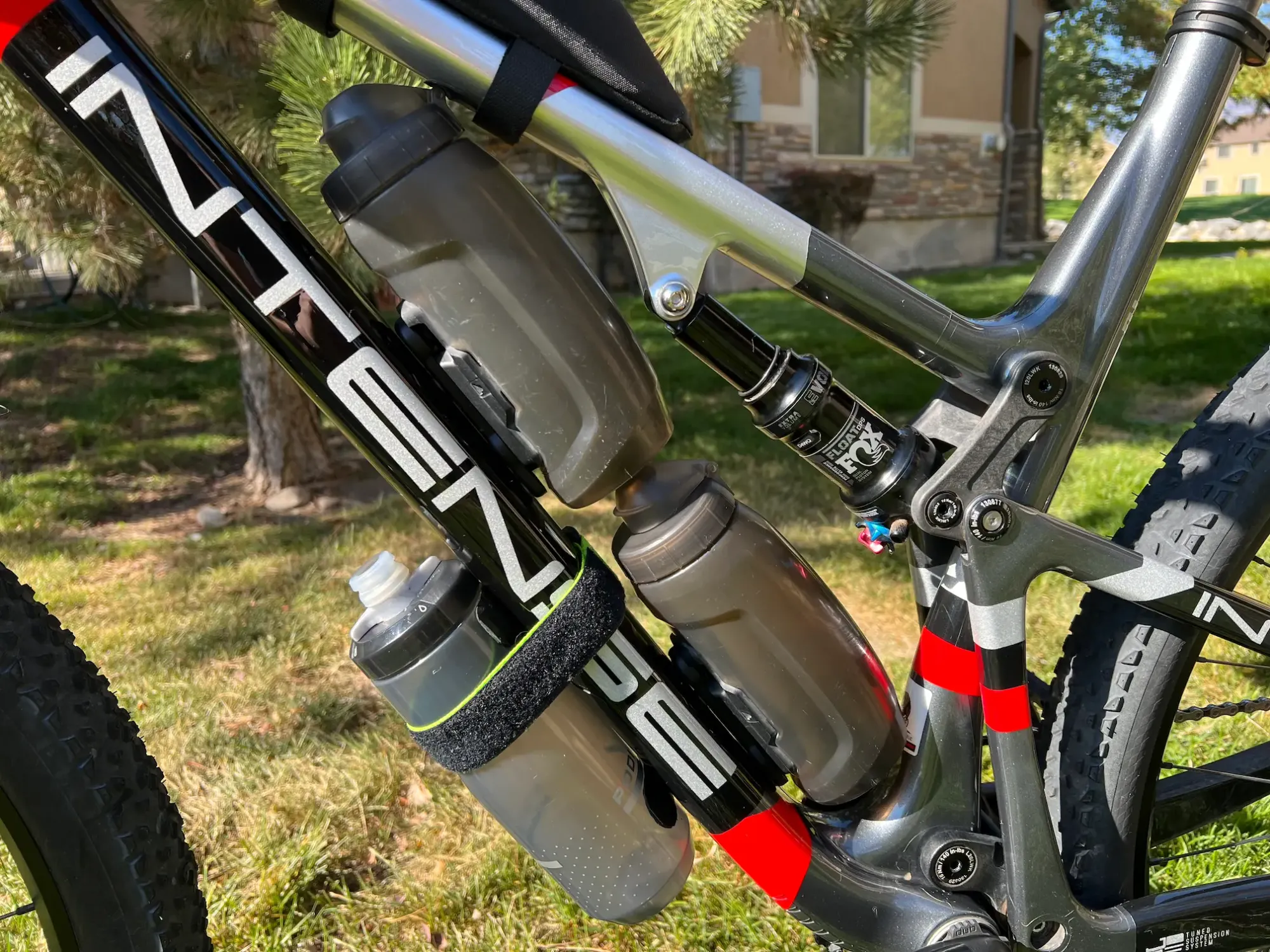
Wrapping up
This is getting to be a long post so I am going to wrap things up soon. But first, I wanted to leave you with a quick list of key race-day reminders.
Race day reminders
- Eat and drink on a regular schedule throughout the race.
- Eat before you feel hungry and drink before you feel thirsty.
- Don't risk trying new bars, gels, hydration mixes, etc. that the race organizers provide if you haven't already tested these prior to the race.
- Focus on consuming solid foods for the majority of the race rather than energy gels.
- Be sure to drink plenty of plain water along with your hydration mixes.
Also, since you have read this far, I highly recommend checking out Peter Stetina's guide to nutrition for gravel domination... or survival. This is a great reference on gravel racing nutrition and hydration strategies from a pro racer.
Get out there and go for it!
Thanks so much for taking the time to read this post! It took a lot of time and energy for me to write. If you haven't already, please consider joining our community using the button below. This will allow you to interact with us and our other community members.
I feel like I could go on forever on this subject. Let me know if you would like me to dive deeper into any of these areas and/or potentially follow up on other race-day strategies. Do you have any favorite biking snacks? Have you had good or bad luck with any specific cycling foods? Let us know about your experiences in the comments section below. 👇 💬


